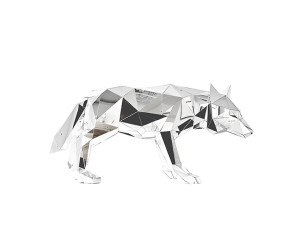
Gregory takes pieces of mirror and cuts them into precise shapes so that he can carefully fit them together to create creatures or objects. “Ideas of wilderness, predatory forces of nature and the wild
form the backbone of my artworks. ” said Gregory. (More…)
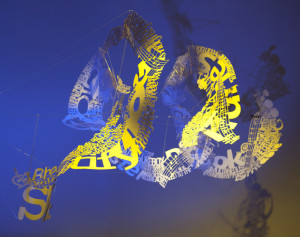
Ebon Heath used laser cutting technology to cut through various papers and create a display of interchanging of words. Then he strings them up into sculptures, chandeliers or extensions of a real human being. Ebon changed the communication with words, which is more audio, into a visual communication. (More…)
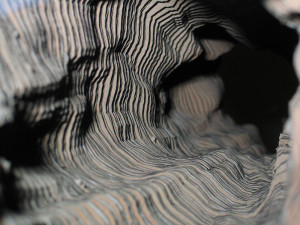
Leander Herzog created these beautiful organic forms through a series of code he created in processing. The generative cardboard cutouts are then stacked together to create these tall mountainous forms. This technique reveals that remarkable landscapes can be created with abstract simple forms. (More…)
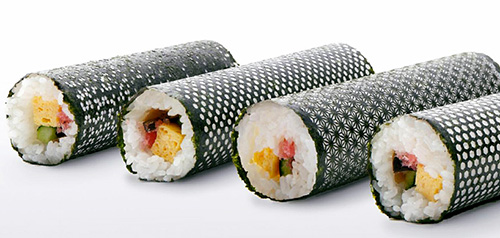
These are seaweed squares with intricate patterns of special Japanese symbolism. It was created and mass-produced with laser-cutter on seaweed and sold at the Mitsubishi Ichigokan Museum in Tokyo.
More… (unavailable in company website)

This is an installation of hanging pyramids with stealth lights shining from inside. It’s made with laser-cut Perpex hanging from fiber optics.
More… (piece not available from artist’s website)

This is an artificial forest installation which reacts to an audience’s touch organically like coral reef. The piece is cut from acrylic and rigged with microprocessors and sensors to simulate life-like reactions.
More…
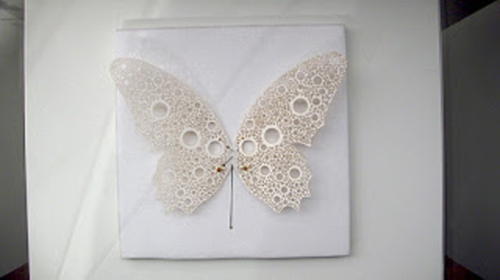 This piece was made by laser cutting holes into plywood, then laser cutting the shape of a butterfly. The piece was then mounted onto glass, which creates depth by adding shadows and reflections.
This piece was made by laser cutting holes into plywood, then laser cutting the shape of a butterfly. The piece was then mounted onto glass, which creates depth by adding shadows and reflections.
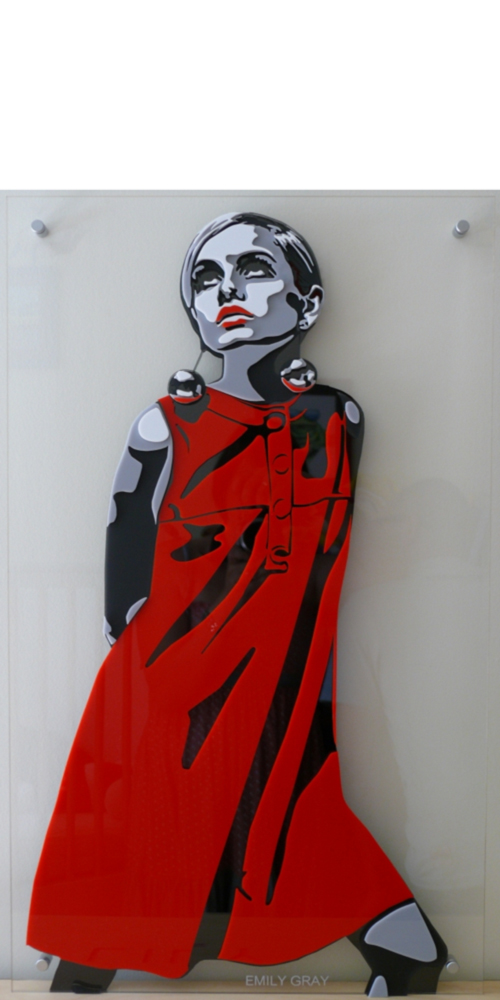 The piece was made by cutting each value in a different color acrylic. The artist then layered the acrylic to form the image. This is similar to printmaking.
The piece was made by cutting each value in a different color acrylic. The artist then layered the acrylic to form the image. This is similar to printmaking.
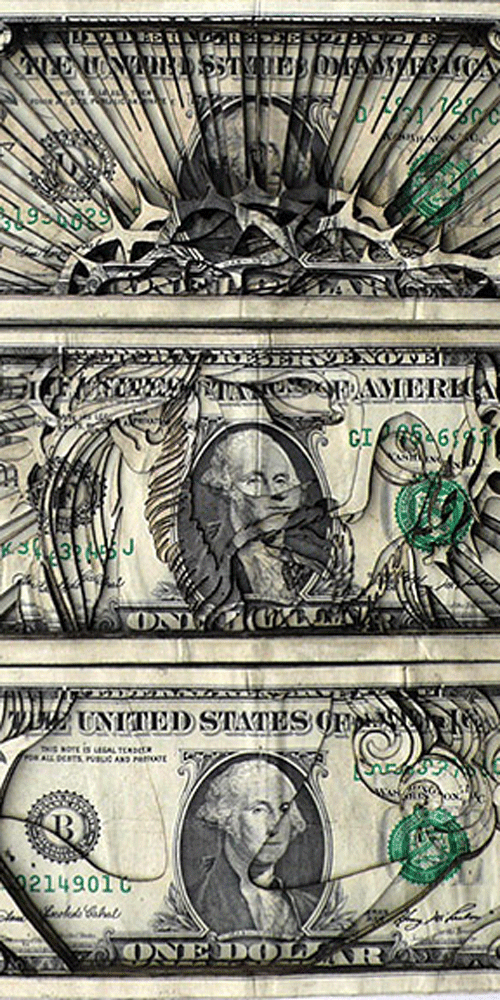 This piece was created by laser cutting a design into 1 dollar bills. The bills were then stacked to form a layered image. The image of Jesus cut into money is very impactful to the viewer.
This piece was created by laser cutting a design into 1 dollar bills. The bills were then stacked to form a layered image. The image of Jesus cut into money is very impactful to the viewer.
“Koi Puzzle” by Wenquing Yan is a Three-Dimensional Puzzle which moves like a fish would move, from side to side. Initially designed in Maya, then traced in illustrator and lasercut.
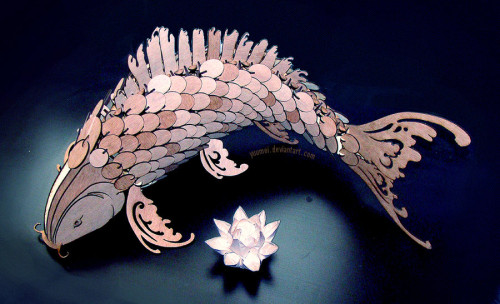
One can find more of Yan’s work here on deviantArt, which is her primary site. Here is the Koi Puzzle directly.









